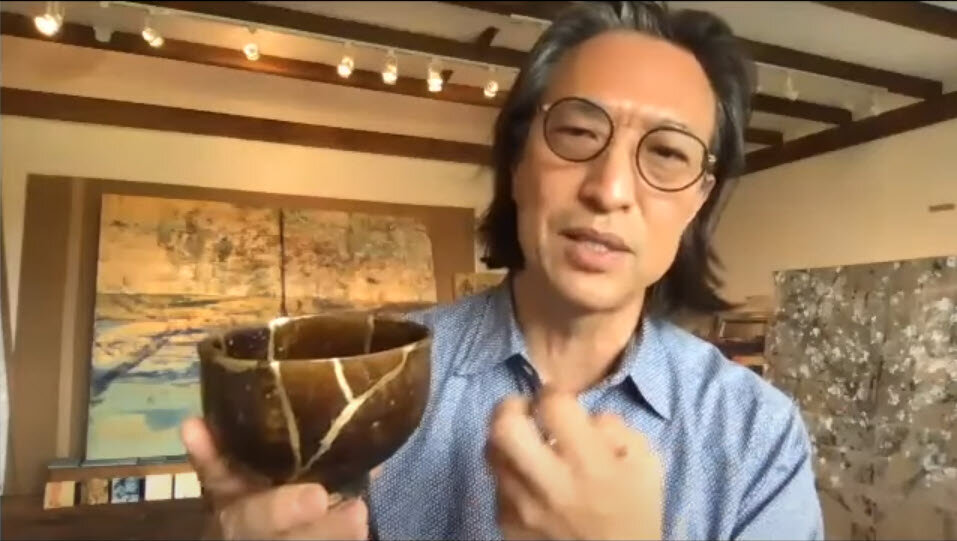I’m broken.
You are beautiful in your brokenness.
A few weeks ago, I listened to an amazing interview with Makoto Fujimura. Fujimura talked about “Kintsugi theology.” Kintsugi is a Japanese artistic tradition “which prioritizes beholding broken pieces of pottery before repairing them to create something new.” You may have heard of this kind of art. Rather than repair broken pieces of pottery, the artists keep the fractured shards and cherish -- he calls it “behold” -- them, sometimes for generations. Then, if they decide to put them together again, they use a golden mineral to mend the piece of pottery and make it whole again. Fujimura held up a 400-year-old cup when he talked about it.
Early in the interview, Fujimura remarked:
Christ's wounds are still with him post-resurrection glory*. Therefore, we can assume that all that we go through, even the fractures that we go through, remain in some way to glorify God and, in fact, may create some part of the new creation. We don't understand this fully, but it is a mystery that is worth thinking about.
I had never thought of that before -- our wounds remain and may even make us a new, more glorious being. God takes our broken selves and makes us beautiful, without fixing us, without taking away our brokenness, but instead, he uses our broken pieces to make us whole and more beautiful than we were before.
I've always thought that when God looks at us through Jesus, he sees us as beautiful because, through the lens of Jesus, he doesn't see all the bad stuff in us. I even wrote about that in a previous email to you -- like looking through the red acetate film of the old password game shows just the blue letters under all those red letters covering them. But now I'm thinking, no, God sees all the broken stuff, he sees it all clearly, and he sees it is all beautiful.
God doesn’t make our brokenness disappear -- he doesn’t “fix” us that way. He loves us so much that he looks at us in our brokenness and sees beauty.
* In case you don’t know the story: Christ’s wounds were featured in the story of “doubting Thomas.” Thomas was one of Jesus’ disciples and he happened to be absent when Jesus first appeared to his disciples after he rose from the dead. He came to be called “doubting Thomas” because, when the other disciples told him Jesus was alive again, Thomas said, ““Unless I see the nail marks in his hands and put my finger where the nails were, and put my hand into his side, I will not believe.” Later Christ appeared again, Thomas was there this time, and:
Jesus said to Thomas, “Put your finger here; see my hands. Reach out your hand and put it into my side. Stop doubting and believe.”
Thomas said to him, “My Lord and my God!” (John 20:24-29)
